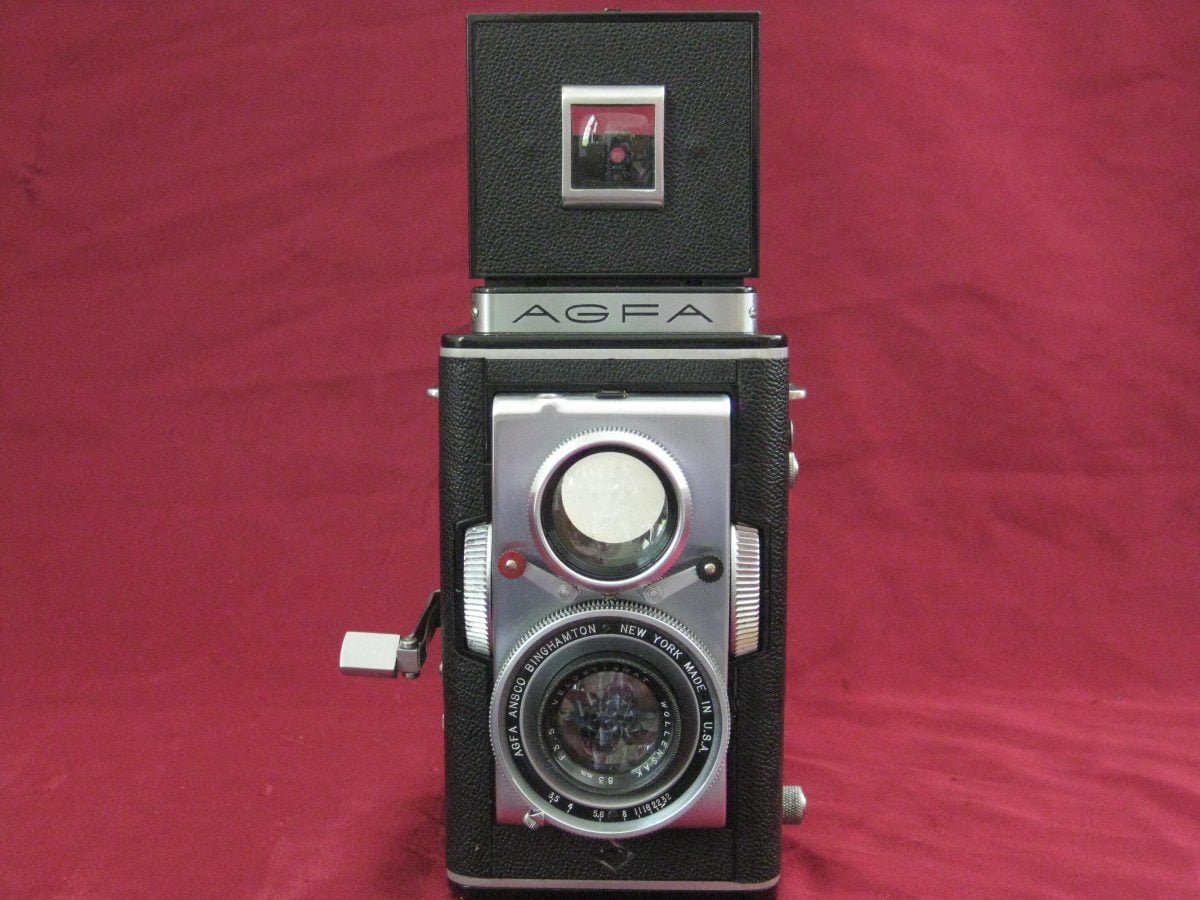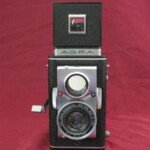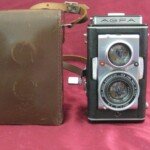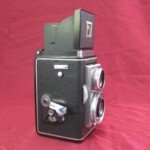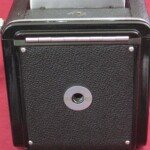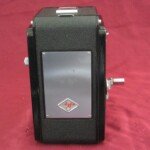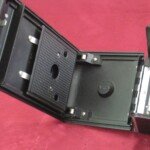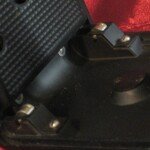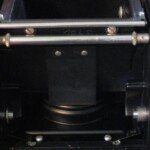When Ansco announced the Reflex in 1945, their ads in trade journals claimed that the camera was “6 years old”. Those ads showed an all-black Reflex with many features in common with the production model.
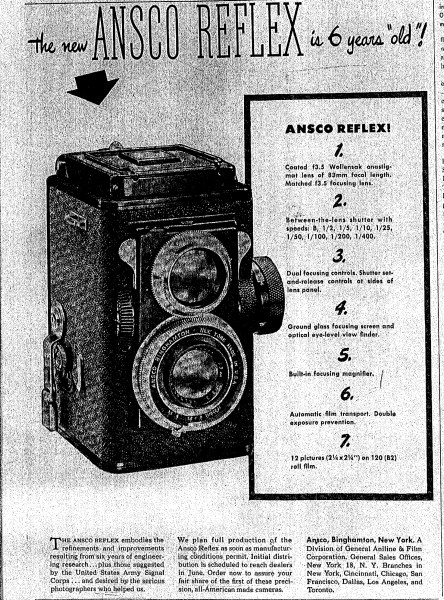
There is not a lot of evidence to support the claim. Government records don’t mention the Reflex until 1945. Ansco spent most of the war developing and producing war materiel.
A factor in the shortage of photographic equipment and supplies was the conversion of many manufacturing plants to the production of other war equipment. For example, Eastman stopped making cameras in 1941–1942, and began again only in a limited way in 1943. Ansco stopped soon after Pearl Harbor and throughout the better part of the war produced no photographic material except paper and film.1
In 1943, the Army Pictorial Service organized the Pictorial Engineering and Research Laboratory (PERL) to rede-
sign, improve, and develop better photographic equipment.
For the most part, PERL projects consisted of short-range modifications, improvements, or adaptations of existing items. The actual development work PERL accomplished either in its own laboratory, or through contracts with commercial concerns.2
Yet the Reflex did not spring from nothing in 1945. There had to have been some work in preparation. Ansco had two successive years of record earnings in 1938 and 1939. Flush with cash, it makes some sense that they would start to develop a camera to compete with the very popular Rolleiflex.
The answer to that mystery may be this prototype.
The First Announcement
Ansco announced the coming Reflex in trade journals like the North American Retail Druggists (N.A.R.D.) Journal, Photo Trade News and National Photo Dealer. The ad listed seven features of the new camera and claimed improvements suggested by U.S. Army Signal Corps. PERL was a part of the Signal Corps and may have provided feedback to Ansco about the Reflex. I’ve not found direct evidence to support that yet.
AGFA-Ansco Becomes Ansco
Ansco, and General Aniline and Film, came under close scrutiny of the government with Germany’s invasion of Poland in 1939. In 1942, the U.S. government seized AGFA-Ansco as enemy property. The firm dropped AGFA from its name in 1943. This prototype, clearly labeled AGFA, was likely developed before the name change.
Personnel Losses
AGFA-Ansco lost a significant number of German and naturalized employees of German descent between 1939 and 1942, including key engineers and machinists. It’s not unreasonable to think that Reflex development began in 1939 and petered off as key engineers were dismissed. The intelligence gap created presented problems for General Aniline and Ansco in other areas, so the delay between announcement and production makes a certain amount of sense.
The AGFA Prototype in Detail
There are several details about this prototype, aside from the most obvious, that are immediately notable:
- The camera lacks a focus knob on the left side.
- The blank depth of field plate on the back.
- Strap posts on the left and right side.
Other, less obvious exterior differences are:
- The base of the crank lever is flush to the body instead of raised. The raised portion around the counter mechanism extends under the crank lever.
- The counter knob has a matte, scooped finish instead of an arrow and leather insert.
- There’s a small diamond impression under the taking lens where a logo would have been.
- The knobs on the cocking and shutter release levers are red and black and appear to be plastic.
- The placement of the coupling gear is in the middle, between the two lenses, instead of under the cocking lever.
- The threaded shutter release is closer to the middle of the lens board.
- The taking lens is clearly marked “Wollensak Velostigmat” and the black nameplate ring reads “AGFA ANSCO BINGHAMTON”.
- The film retainer knobs are straight-side cylinders instead of tapered.
- A screw is visible, going through the leather, at the top of the left and right sides.
- The focus wheels are engraved with distance markers.
- The back release buttons lack the engraving of the production version.
- The hood release is a toothed tab.
- The film counter window cover reads Agfa, which also explains its diamond shape.
- The hood coupling mechanism guide (cutout) is parallel to the body; it’s at an angle on the production units.
- The viewing lens has a different profile on its outermost ring and doesn’t protrude as far forward.
- There are four “feet” on the base.
- The aperture “tape” is white with black numbers; production units are black with white numbers.
There are a few details on the inside worth noting:
- The film counter rod has a machined gear; production models have a narrow, sharp wheel that leaves pinprick a impression on film.
- There are two bearings for pressing against the counter rod. Production models have a rod instead.
Last the everready case is stamped with the Agfa diamond logo on the front, just below the taking lens.
It’s clear from the numerous small differences between this and the production models that it’s a prototype. Exactly when it was made is hard to pin down but an abundance of clues point to sometime before 1943.
